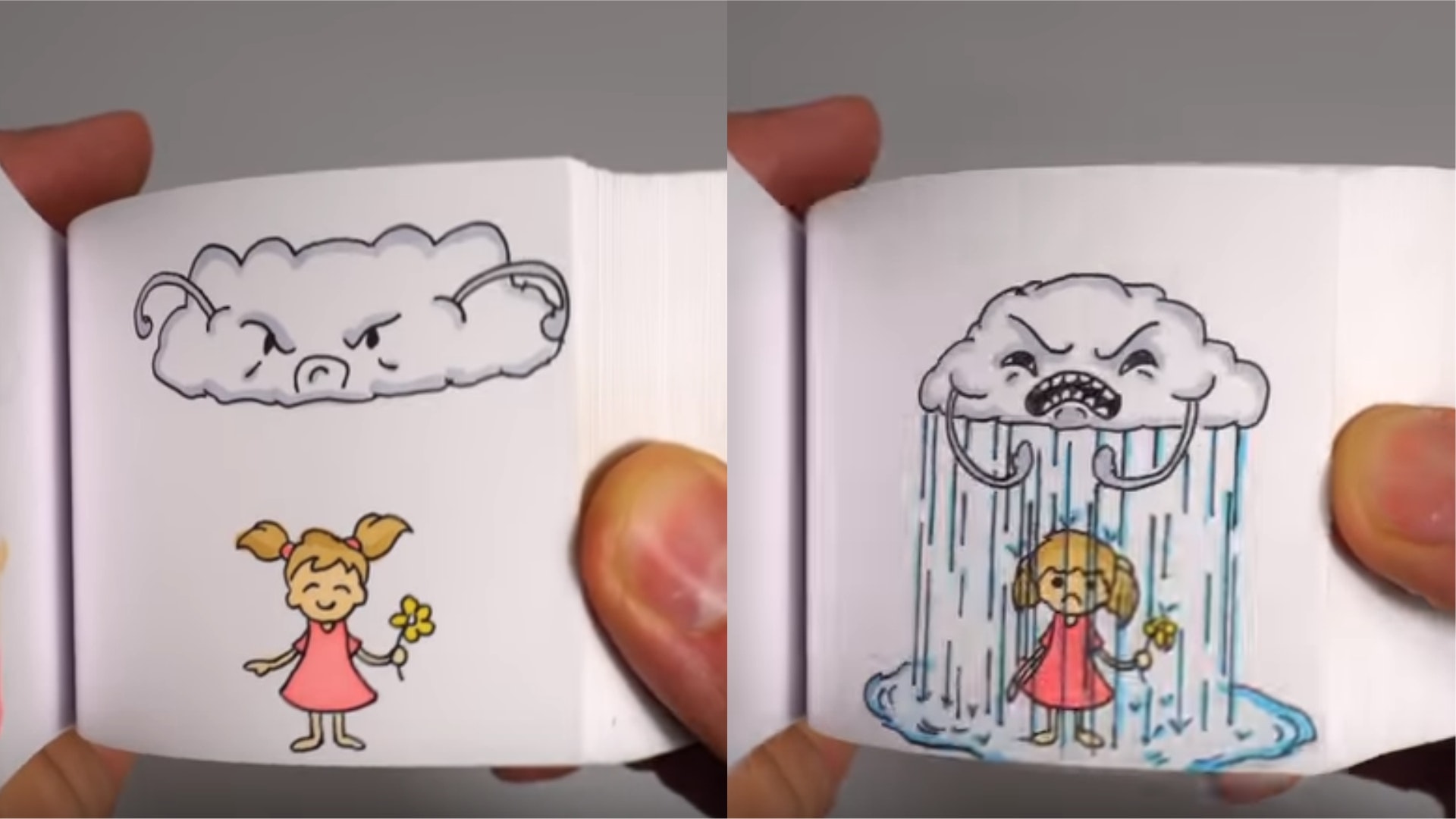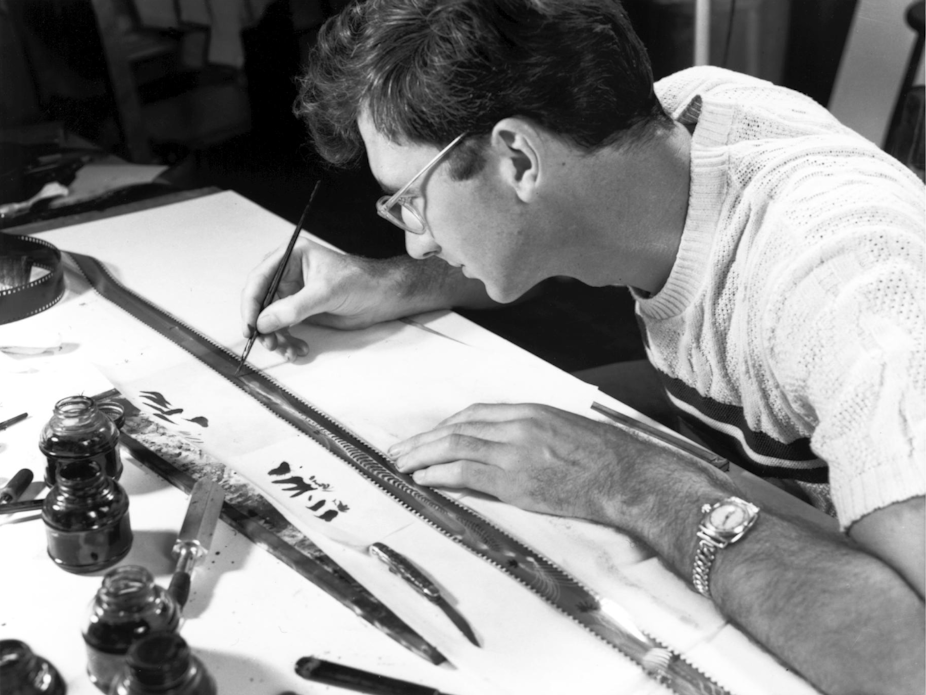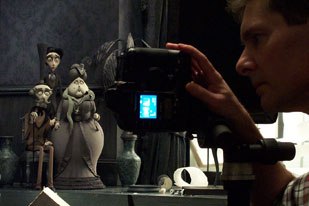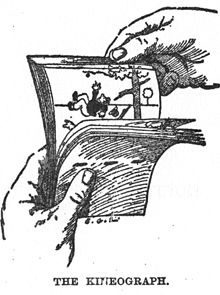Unit 34: Task 1
Techniques and Development of 2D Animation
In this article, I will cover some of the traditional 2D animation techniques, how they came about and their uses in modern society as well as delving further into the development of 2D animation by different pioneers and developers and gaining a more in-depth understanding of some of the contemporary works that have been able to flourish from this.
Techniques:
Traditional 2D Animation (flip-book, cel animation, rotoscoping, drawn on film, photographic stills);
Flip Book The first form of 2D animation that we are going to look at dates back to the late 17th century and is known today as the flip book. As defined by the New York Film Academy, a flipbook is a book that 'presents a series of pictures in rapid succession so that an audience perceives moving images.'
(https://www.nyfa.edu/student-resources/flipbook-animation-techniques-and-examples/)
The very first flipbook; originally known as a Kineograph, came about in 1868 when it was patented by John Barnes Linnett. It was the first form of animation that used a linear sequence of images. (https://fliptomania.com/did-you-know/)
This is an image of Linnett's Kineograph:
As the flipbook utilises the linear sequence of images, it means most people in modern society can easily create a flipbook of their own for varying purposes such as entertainment. 
Cel Animation
Cel animation is another form of animation in which 2D animation is created by hand using sheets of transparent plastic known as 'cels'. The earliest plastic that was used to create cels was cellulose nitrate. Over time this plastic was abandoned due to its tendencies to produce hazardous gases with age as well as visible yellowing and wrinkles forming. It was replaced later by cellulose acetate which was also discovered to begin to degrade over time by the chemical reaction 'hydrolysis'. Thus, cellulose acetate was then replaced by polyester; a film that doesn't require plasticisers. However, as technology has developed significantly, the majority of animation is done digitally which lessens the need for such materials within the animation process. (http://www.getty.edu/conservation/publications_resources/newsletters/29_1/animation.html) Within the process of cel animation, animators transfer their drawings onto the cels and each cel is responsible for one drawing with an outline of the drawing on one side and the drawing filled in using colour on the other. Each cel can then be placed over a background and are photographed in sequence. Similarly to flipbooks, when the photographed images, created using cels, are played at a certain speed (12-24 fps) it creates the illusion of movement. (https://conceptartempire.com/cel-animation/)  In this image, we can see the multiple layers of cels stacked on top of the background in sequence as they would've been individually photographed. Rotoscoping Rotoscoping is the way that live action film or images can be transferred into another film sequence using a special device called a Rotoscope which projects live action images. In order to do this the live action images are projected onto a frosted glass panel and then re-drawn by an animator. This allows them to create more realistic action within animations. (https://www.youtube.com/watch?v=hOu7dCf5ajc) The Rotoscoping technique was invented by Max Fleischer and he was able to implement this into his series Out of the Inkwell in 1915. In the below video, Rotoscoping has been used to animate the movements of the dancer in the music video for Sia's Chandelier: Within the past two decades, however, computers have replaced the need for the rotoscoping technique and it has been most recently used in the 2007 film Juno. (http://www.tech-faq.com/rotoscoping.html) Drawn On Film Drawn on Film is an animation technique that has been practiced since 1916 although the majority of animated movies produced in that time have been lost. Within drawn on film, animators can draw directly onto the film reel - usually very simple drawings - in order to produce an animation sequence. However, animators can also stick things onto the film reel or etch things into it using a sharp object. Once they have finished drawing on the film reel it has to be developed like a photograph in order for us to be able to see a clearer image. Blank film reels can be drawn on in dark rooms and animations begin to come to shape as they are slowly exposed to light. In this image we can see developer Norman Mc Laren working on Begone Dull Care in 1949:(http://theconversation.com/norman-mclaren-a-late-great-animator-now-drawing-applause-27506)  This form of animation may have been considered advantageous as it meant that animators could create cheaper animations as digital equipment such as a computer is not mandatory and it gave them the freedom to experiment with different types of drawing and light exposure. Photographic Stills A Photographic Still is another name for a stop motion animation. Within this type of animation, the illusion of movement for animation sequences is created by cameras being stopped and started to take multiple photographs that when played in quick succession, create an animation. (https://www.youtube.com/watch?v=wVjMFU11hVA) For stop motion a range of objects can be used - In many famous stop motion animations, such as Laika's Coraline, they use puppets; however, you can use everyday objects for stop motion animation or even people. In this image we can see the puppets used in the Corpse Bride have been positioned and are now being photographed by the Director of Photography and VFX supervisor Pete Kozachik: 
Digital Techniques for 2D Animation (2D bitmap graphics, 2D vector graphics);
Bitmap Graphics
Bitmap graphics are created by pixels that are small individual squares that have all been assigned a colour and arranged in a specific pattern in order to form an image. Bitmap graphics can be edited through the process of erasing or changing the colours of individual pixels. Bitmap graphics are also known as raster graphics.
In the image below, it is highly likely that the character was created using bitmap graphics:  We can tell this image is a bitmap graphic as it would be difficult to create the same detailed shading and complex use of colour with vector graphics. Furthermore, as a bitmap graphic, if we were to zoom in and rescale this image it would become pixellated allowing us to see all of the small pixels that make up such a detailed, intricate image.Vector Graphics On the other hand, there are Vector Graphics. These are when images are created not using pixels, but instead, mathematical formulas that draw lines/curves. Vector graphics are easily edited throughout the process of manipulating their lines and curves. Vector graphics may also be seen to have an advantage over Bitmap Graphics as their files are generally smaller due to the fact that with Vector Graphics you only have to store the mathematical formulae whilst with bitmaps, you must store all of the information attached to each individual pixel. This is an example of an image that has been created using vector graphics:  One way we can tell if an image uses vector or bitmap graphics is through scaling the image. With vector graphics, as you zoom in or rescale the image, there wont be any loss of quality of the image as it is based on mathematical formulas so it can be infinitely resized without losing quality. However, with bitmap graphics, as you zoom in/ rescale images they will become pixellated. We can further tell that this image in particular is a vector graphic as the use of shading and colour is quite simplistic which is common with images made using vector graphics. this is because as they use mathematical formulas, they don't have the advantage of multiple small pixels to inject instances of shading and complex use of colour as with bitmap graphics. The shading created within this vector image was most likely implemented by manually creating areas where the colours were darkened. In terms of 2D animation, Bitmap graphics might be useful for editing more complex animations with complex textures and colours create these more complex and difficult as each individual pixel can be tailored to the needs of the animation. Whereas, with more simplistic animations that use fewer complex textures and colour schemes, vector graphics may be considered much more effective.
Application Software, eg Flash, After Effects, Anime Studio, Toon Boom Studio, PowerPoint
After Effects
After effects is a piece of software by Adobe that is an 'industry-standard motion graphics and visual effects software'. It can be used for motion graphics and different visual effects. It also allows for traditional animation techniques such as rotoscoping and with its many tools enables users to combine a multitude of videos and images into the same scene. Here is an example of the animation results that can be achieved by using After Effects:
As After effects is an industry standard piece of software, it holds a lot of relevance when it comes to developing 2D animation as it is likely to be most commonly be used by professionals for animations that will be viewed by many individuals on a larger scale. Infact it has been used to make many short films and music videos such as: The Organ - Let the Bells Ring, Abacus - Fionn Regan & A Certain Frame of Mind.
Anime Studio MOHO (Anime Studio) is an entry-level animation software that allows for powerful artistic expression through the use of their vast range of tools, pre-made content, and characters. Some of the most notable tools you will find within the software include a video/motion tracking tool, sound effects, automatic lip-syncing and automatic image tracing. This is an example of the kind of animated work you can create using the Anime Studio software: This piece of software may be used both professionally to create things like animated series, shows or films. This is because of the vast range of tools they have available for use such as the motion tracking tool - however, it may also be used by people with less animation knowledge at home such as young children as it is an entry level piece of software.
Development:
Pioneers, eg Joseph Plateau (phenakistoscope), William Horner (zoetrope), Emile Reynaud
(praxinoscope), Edward Muybridge, Edison (kinetoscope), Lumière brothers;
Joseph Plateau Joseph Plateau, the Belgian physicist, can be considered as one of the early pioneers of animation for his work as he and his sons introduced the Phenakistoscope. The phenakistoscope was a device that used the persistence of vision in order to create the illusion of motion. It used two discs that were mounted upon the same axis. The first had slots that ran around its edge and the other had drawings of actions taking place around its edge. These discs then spun in the same direction and when viewed in a mirror through the first discs slots the drawings on the other appeared to move. This form of early animation, however, was very simplistic. It could only be viewed by one person at a time, needed to be spun in the correct direction and could become blurry if spun too fast. Regardless of these slight drawbacks, Plateau's phenakistoscope can still be considered a pivotal point of reference in the way in which we develop animation today. (http://animationgeek.blogspot.com/2011/01/early-pioneer-joseph-plateau.html) Thomas Edison Thomas Edison was responsible for the invention of the Kinetoscope ( this is a greek amalgamation with Kineto meaning 'movement' and scopos meaning 'to view') and his initial concept for this device was based on the phonograph's cylinder. He attached small photographs to a cylinder in a sequence and his hypothesis was that the illusion of movement would be created through reflected light as the cylinder was rotated. This initially didn't work. Later Edison met with physiologist Etienne-Jules Marey who produced a set of sequential still images using rolls of film - a technique called chronophotography. Edison couldn't use Marey's films as they weren't long or sturdy enough. Later emulsion-coated cellulose films were developed by John Carbutt and the kinetoscope was eventually developed with a horizontal-feed system which exposed film strips. This is how Edison's kinetoscope came to life and was unveiled on May 20th, 1891. (https://www.lomography.com/magazine/112686-thomas-edison-and-the-kinetoscope)  An image showing the Kinetoscope in use.
Developers, eg Walt Disney, Hannah Barbera, Warner Bros, Norman McLaren, Len Lye;
Norman McLaren Norman McLaren was a pioneer in animation. His career spanned over 50 years and within this time he was able to develop more than 70 films. Early on within his career he would experiment with fil techniques and would engage in acts such as creating scratches and etching directly into the film as well as cutting holes into the film or painting it. His work was renowned for the ways in which he incorporated light, colour, and motion and spent a lot of timing painting directly onto rolls of film. One extremely famous work of his was the short film 'Neighbors' in 1952 in which he used a process known as pixilation - this is where you use live actors as stop motion objects. He was somewhat disturbed by what he had seen during his work at UNESCO and the Korean war at the time and decided to create this piece to demonstrate his views to how foolish it was to try and resolve disputes with violence. (https://www.bfi.org.uk/news-opinion/news-bfi/features/where-begin-norman-mclaren) You can still watch Neighbours today on Youtube: Len Lye Len Lye was an experimental artist and animation pioneer who spent the majority of his career trying to compose motion. He explored this through different forms of media such as film, painting, and sculptures. His first experimental films can be considered animation landmarks. For example, one of his animations; Tusalava, utilised the traditional animation form of cel animation and was inspired by aborigine art. However, the reaction to his animation was very underwhelming which led to a loss of funding for him. Later on, Lye created A Colour Box in 1936 which was the first direct film to be shown to a general cinema audience. A Colour Box was also voted one of the top 10 most significant animation films of all time at the 2005 Annecy Film Festival. (http://www.skwigly.co.uk/100-greatest-animated-shorts-colour-box-len-lye/) You can also view Len Lye's animations on youtube including A Colour Box:
Contemporary work, eg Monty Python, Yellow Submarine, A Scanner Darkly, Persepolis.
Monty Python Monty Python is a British comedy show that was produced in the late 1960s by the Python troupe. The show was primarily based on comedy sketches and featured both real actors and animated sketches. The animated scenes were implicated in order to depict what people could not and the sketches would contain many surreal and bizarre features and techniques. This use of animation displays that animation can bring excitement and more interesting features to any production. In the case of Monty Python, it helped create something that collided with the norm of comedy sketches that purely featured actors and implemented a more psychedelic and unusual twist to the show - making it truly stand out as contemporary work. (http://historyandusesofanimation.blogspot.com/2012/10/contemporary-sources-of-animation.html) Here is a clip from an episode of Monty Python that features some of their animated sketches: A Scanner Darkly A Scanner Darkly is a science fiction thriller that that was initially digitally filmed. However, later on, it was animated using the interpolated rotoscoping technique. This helped to incorporate a lot of realistic, yet stylised imagery into the movie and allows for more creative freedom with the characters whilst creating a slight disconnect from reality in order to immerse viewers further into the very unusual plot of this movie. The use of Rotoscoping within the movie may have most likely been chosen as a stylistic technique in order to correlate with their unusual plot they utilised an unusual style for the movie overall. (http://historyandusesofanimation.blogspot.com/2012/10/contemporary-sources-of-animation.html) This trailer gives a better insight into the use of rotoscoping within A Scanner Darkly as a stylistic technique: To conclude, from this article we can see how different forms of traditional 2D animation have shaped and altered the way in which we create and enjoy animation today. We have also gained a deeper insight into how some of the Pioneers and Developers of 2D animation got inspiration for their ideas and devices and the process they went through so that we could create such stunning animations within the modern day. Zalika English |


Comments
Post a Comment